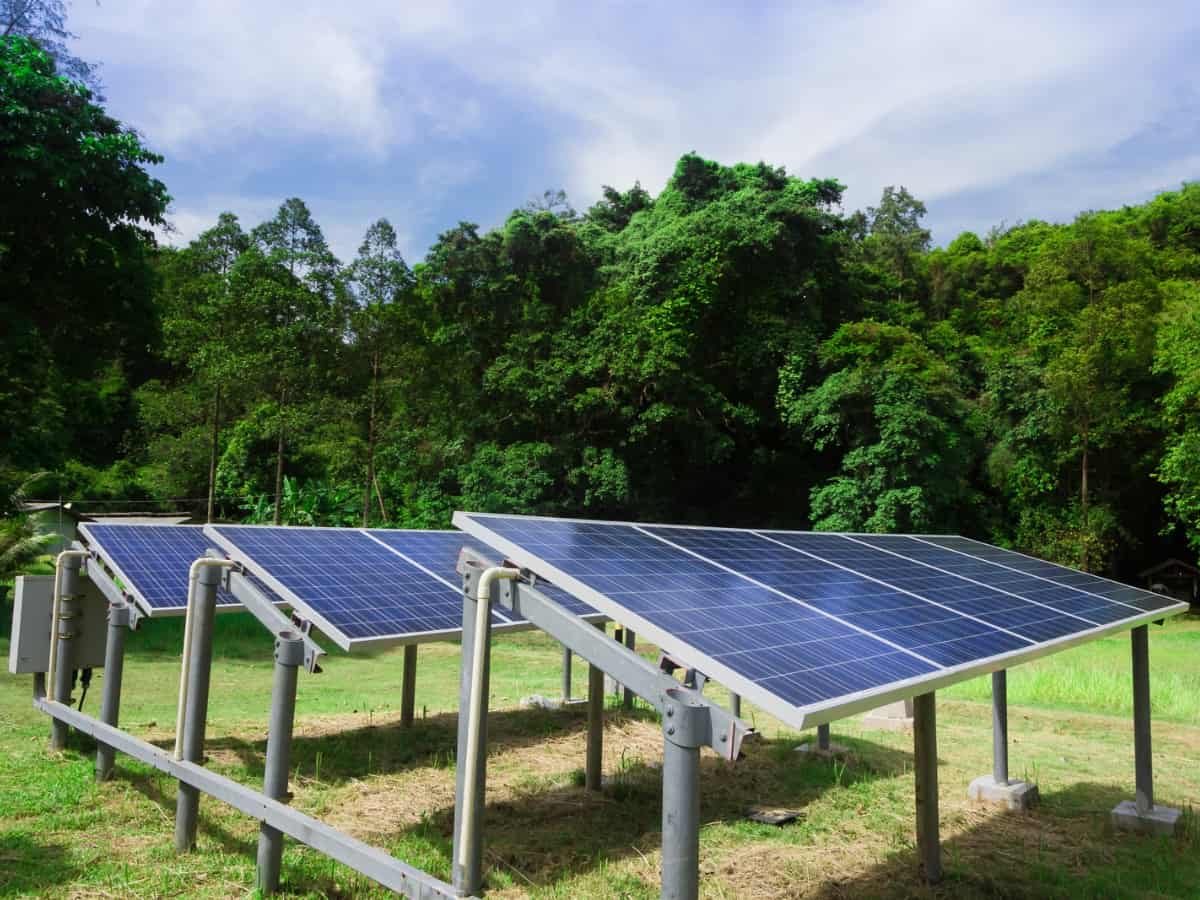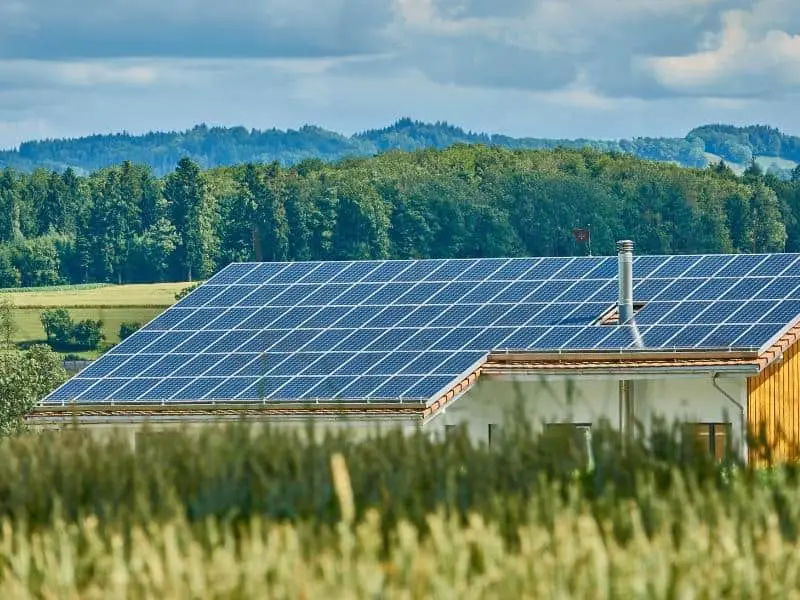Solar inverters can run in a grid-tied connection or an off-grid connection. In a grid-tied configuration, the solar panels’ direct current (DC) solar power must first be converted to alternating current (AC) by the solar inverter before being fed into the power grid.
A solar inverter not tied to the power grid is configured to draw DC from a battery power bank and convert it to AC for use by AC-powered appliances and devices. The solar panel-generated DC will charge the battery bank via a solar charge controller.
There are three common types of solar inverters:
- Off-grid solar inverters
- Grid-tied solar inverters
- Hybrid solar inverters
Let’s discuss these inverter configurations and see which would work best for your situation.

How Does An Off-Grid Solar Inverter System Work?
Off-grid solar inverters are designed to convert the direct current power supplied by the solar panels to power AC-type devices and appliances in homes, offices, and workshops. The solar power generated either by micro-inverters or string inverters is inverted from DC to AC.
Off-grid solar power systems have no connection to grid power. They are most often used where no grid power is available or for power users who want to be completely self-sufficient in power generation.
The early compensation models for grid-tied solar systems progressively drive homeowners to move to off-grid solar systems. In the first compensation model, grid-tied solar system owners were given one-to-one recognition of the solar power supplied to the grid.
The homeowner had to ensure that the DC generated was converted to AC before being fed to the power grid via a net metering device. The homeowners used the grid as a battery that could “sell” power to the grid during the daylight hours and “buy” power back at night when they needed it.
The exchange was done on a direct one-to-one basis, i.e., one Watt produced at noon could be repurchased at 8 pm at the same rate. The utility grid companies soon realized this was a bad deal and switched to buying at an “off-peak” rate and selling at a “peak” rate.
Even with this model, the utility companies were still coming off second best and proposed that all grid-tied “suppliers/users” be charged a flat connection fee per month for the privilege of being grid-tied.
This change will drive homeowners to become fully off-grid solar power producers and self-sufficient. The conversion to an off-grid system requires the installation of sufficient battery storage capacity and inverter capacity to power the household for a couple of days.
The average US household uses 11,715 kWh per annum and would thus need to have sufficient battery storage capacity for at least 30kWh (average daily consumption). An inverter with a 6kWh capacity would provide AC from the battery-supplied DC.
A typical off-grid system will consist of the following components:
- Solar panels to generate DC power
- Solar charge controller to convert solar DC to battery charge voltage (DCv)
- A battery bank of sufficient size to power the household demand
- Inverter to convert battery DC to 120V 60Hz AC power as required by household appliances

How Does A Grid-Tied Solar Inverter System Work?
Grid-tied solar inverters are designed to convert the DC power generated by the solar panels to AC that can be fed to the power grid via a net-metering control unit. During the solar productive daylight hours, the DC power generated must be converter to AC before being fed into the power grid.
Grid-tied systems require approval from local authorities and utility grid power companies. The inverters used to feed AC to the grid must detect power outages in the grid to shut down the supply to prevent the electrocution of the repair technicians.
A typical grid-tied system will consist of the following components:
- Solar panels to generate DC power
- Micro-inverters or a string inverter to convert the solar-generated DC to AC
- Net-metering device to measure AC (Output) versus AC (Input)
String solar inverters are the most commonly used inverter due to their simple installation and low cost. String solar inverters can generate single-phase and three-phase AC output.
US households are typically installed with a single-phase string inverter instead of the three-phased string inverters installed in Europe. Most commercial users require three-phase string inverters.
Micro-inverters are dedicated inverters fitted to individual solar panels and convert the solar panel generated DC to AC before feeding this AC power to a combiner box. Each microinverter is designed to monitor and invert the DC generated by an individual solar panel.
The advantage of using solar inverters is that they will last much longer than string inverters, and they will not manage the power output from a solar array when shadows, leaves, or dirt obstruct one or more panels.
How Does A Hybrid Solar Inverter System Work?
Hybrid solar inverters are designed to convert the DC power generated by the solar panels to AC that can be fed to the power grid via a net-metering control unit or be used by AC-powered appliances. The hybrid inverter output can also charge a backup battery bank via a rectifier.
Hybrid solar inverters are pretty expensive and require approval from power utility authorities before connecting to the power grid. The advantage is that these hybrid inverters can feed the grid or the household demand depending on the most favorable source.
Hybrid solar systems still need a backup battery bank to power the household during power outages and when the solar panels are not generating power. The trend is away from grid-tied systems and towards full off-grid systems due to changes in how grid companies compensate power generators.
Off-grid solar systems will require homeowners to install sufficient power storage banks to cover their power needs for a couple of days. If the sun does not shine or the solar generation is weak during some months, the homeowner needs to have supplemental power supply systems to feed the battery bank.
Solar power generation should be augmented with wind power, and small hydropower was available or diesel backup generators. Going entirely off the grid means planning for worst-case scenarios and installing sufficient battery capacity and power generation redundancy.
References:




